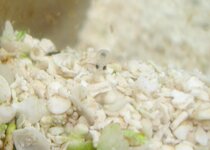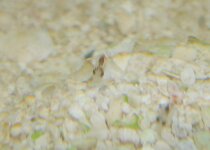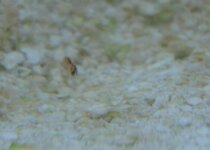Hi Tim,
IMHO, it just isn't feasible to raise "small egg" octopus babies at
home. Small egg species have been raised in artificial environments
but, to my knowledge, the success stories always come from
institutions that are able to devote the necessary time and resources
to the task. I'm pretty sure, for example, that the Seattle Aquarium
has raised GPO's from eggs but I'm also sure that they don't try to
replenish their display animals through captive breeding - it's just
too much work!
Here's some of what you're up against:
1. The eggs will hatch into very small, weakly swimming babies. In a
normal tank these will almost certainly be destroyed, damaged, or
trapped by the whatever water circulation system you use. The normal
way around this is to have a Kriesel tank ready and transfer the
babies to it immediately.
2. Baby octos are proportionally just as hungry as adults (maybe even
more so) but because of their small size they are very limited in what
they can capture at first. You'll have to provide copepods or similar
sized zooplankton for the period that the baby octos remain as free
swimmers. Copepod culture is fairly straight forward but it's also
fairly labor intensive.
3. Assuming they survive the planktonic stage they will quickly
outgrow zooplankton as food and you'll have to be ready with something
slightly larger such as amphipods or small shrimp. These are probably
easier to culture than copepods from a technical standpoint but they
have another set of problems. Because they grow far more slowly than
copepods you'll have to devote a lot of space to amphipod culture in
order to have a sufficient supply during the period that your young
octos are eating them.
4. They will also outgrow amphipods and, from what I've read, O.
rubescens will then move on to small snails or hermits. It isn't
practical to culture or collect this sort of thing but possibly you
could substitute an equivalent size shrimp.
5. At every stage, your baby octos will be more than happy to eat each
other if there isn't other food in sufficient quantities. In fact,
there is a school of thought that says cephs actually prefer other
cephs as food. That boils down to putting a priority on separating the
babies as quickly as possible. Obviously, it wouldn't be possible, let
alone practical, to have a separate space for each of several hundred
babies but you should be aware that you'll be lucky to get one
maturing octo from each enclosure that you do construct.
6. These things are, of course, in addition to the 'normal' problems
of keeping a ceph with their high metabolism and messy eating habits.
A couple of final comments about O. rubescens. First, be careful about
handling these guys - they are biters and their bite can be fairly
serious. Second, they have a reputation for being escape artists, even
compared to other species of octo. Roy Caldwell, who posts here with
the screen name Neogondylactus (sp?) says this may be because O.
rubescens is often found intertidally which indicates it isn't very
concerned about climbing out of the water.
Sorry if this comes across as being too negative but the things I
mentioned are realistic concerns for a prospective octopus nursery.
Discouragingly yours,
Alex





